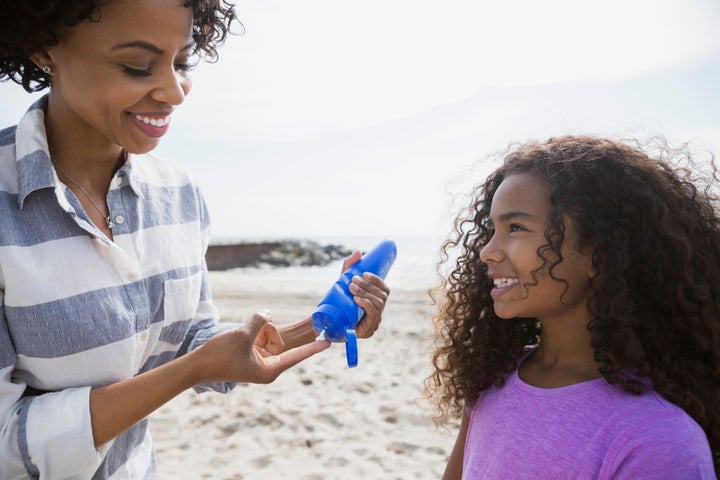Buying sun cream can be a minefield.
You have to choose the brand, SPF and then there’s the whole dilemma of choosing between spray and lotion. And WTF is the difference between UVA and UVB?
To try and help you make better decisions in the sun screen department, we spoke to leading London expert Firas Al-Niaimi, consultant dermatologist based in London and medical director at Sk:n Clinics, to discuss what to look out for when buying sun cream, plus his favourite (and most trusted) brands to try.

UVA and UVB explained
Sunlight has different wave lengths: UVA, a longer wavelength which can travel through clouds and is responsible for making us age, and UVB, a shorter and more intense wavelength which can cause sun burn.
In the daytime, the sun is closer to the earth so the shorter wavelength (UVB) can reach the earth in higher quantities. This makes it hotter too.
“The skin absorbs both UVA and UVB wavelengths which can cause harm to the skin,” Al-Niaimi tells The Huffington Post UK.
“We obviously need to protect the skin from UVA and UVB, but we need to maximise protection for the latter.”
This is where sunscreen and SPF - or Sun Protection Factor - comes in.
What is SPF?
SPF is a measurement of the exposure time that is required for a person’s skin to burn in the sun. So a person who wears SPF 30 will need to sit out in the sun for 30 times the normal amount it takes a person to get burnt.
“When the SPF is higher it gives us more protection,” says Al-Niaimi. “Research has showed that SPF 30 gives us good protection, while SPF 50 gives the best protection.”
For people with fair skin, Al-Niaimi recommends wearing sun cream with an SPF of 30 or more. But if you have a high risk of developing skin cancer, or you’re on holiday close to the equator, he recommends wearing SPF 50.
Al-Niaimi adds that SPF measures aren’t always entirely accurate - so it’s best to apply sun cream liberally and often.
“SPF measures in the lab are never going to be able to be reproduced in real life,” he explains. “When we measure it in the lab we base it on a uniform thickness of the cream which is spread across all of the skin.”
But in real life, people are likely to put less cream on with thinner coverage - sometimes missing bits of their skin (such as hard to reach places) entirely.
“I recommend at least SPF 50 to get adequate protection,” concludes Al-Niaimi.
Common misconceptions surrounding SPF
An SPF 50 “does not double the protection” of SPF 25.
Moisturiser with SPF is not enough to protect your skin.
One application of sunscreen per day is not enough to protect from sun burn.
Just because a sunscreen is “waterproof”, it doesn’t mean you shouldn’t top it up again after a swim.
What are the best sun screens to use?
The type of sunscreen you use will depend upon a variety of things. For example, someone with darker skin “might get away with a lower SPF than someone who is fair skinned”.
Someone who has a hairy body might prefer sprays, while people with fair skin might want lotions for thicker coverage.
Babies need to be protected from the sun as much as possible and, ideally, should be kept in the shade at all times. Meanwhile children should be protected with an SPF of 30+.
“Certain manufacturers put a lot of effort into science and research of sun screens,” says Al-Niaimi.
He recommends creams manufactured by the following brands:
La Roche-Posay
SkinCeuticals
Heliocare
SunSense
How can you protect against UVAs?
UVA wavelengths can cause skin damage resulting in ageing. When it comes to buying a sun cream you need to look at the star rating, as well as the SPF, to ensure you are protecting against UVAs too.
“The higher the star rating, the more protection the sun cream is going to give us,” explains Al-Niaimi. “So four stars will give better protection compared to two stars.”
“There are also ‘reflectant’ or physical sun screens, which reflect back the light and are suitable for protecting against UVA rays.”
The best way to protect again sun burn
It might sound obvious, but the best way to reduce your chances of burning is to change your behaviour.
Al-Niaimi recommends seeking the shade, avoiding sunbathing during intense hours of sunlight, wearing a hat and covering up with long sleeves to keep safe.